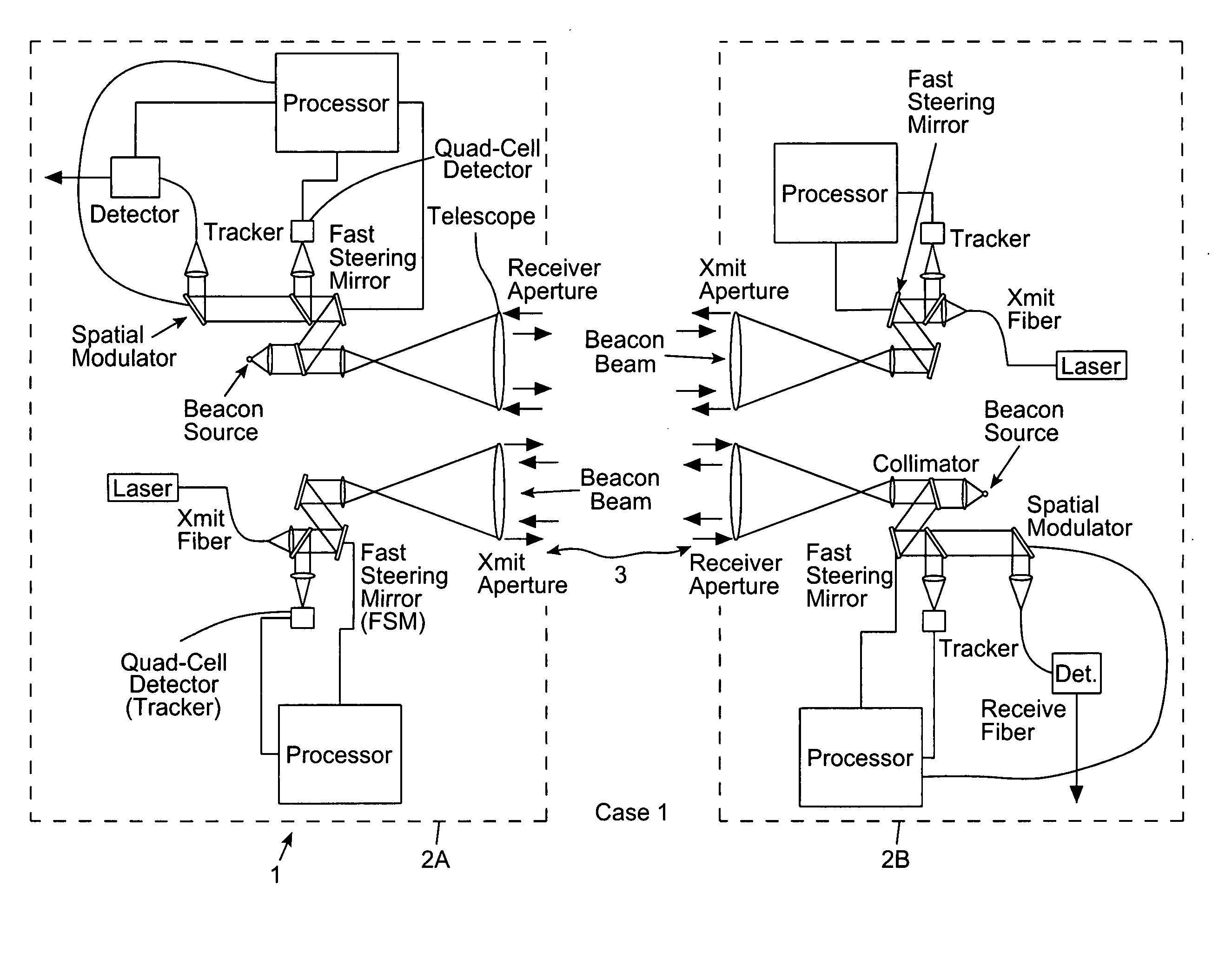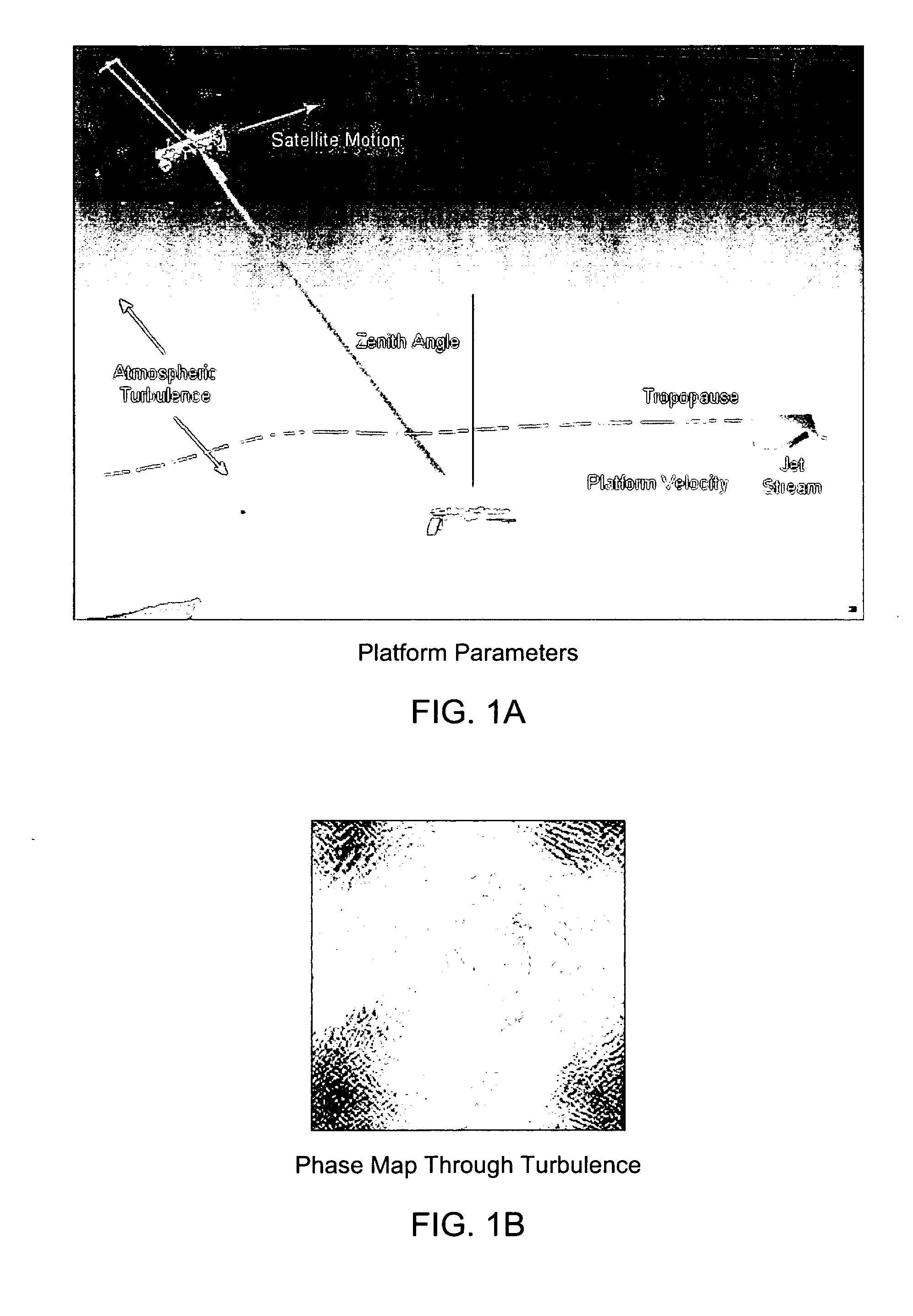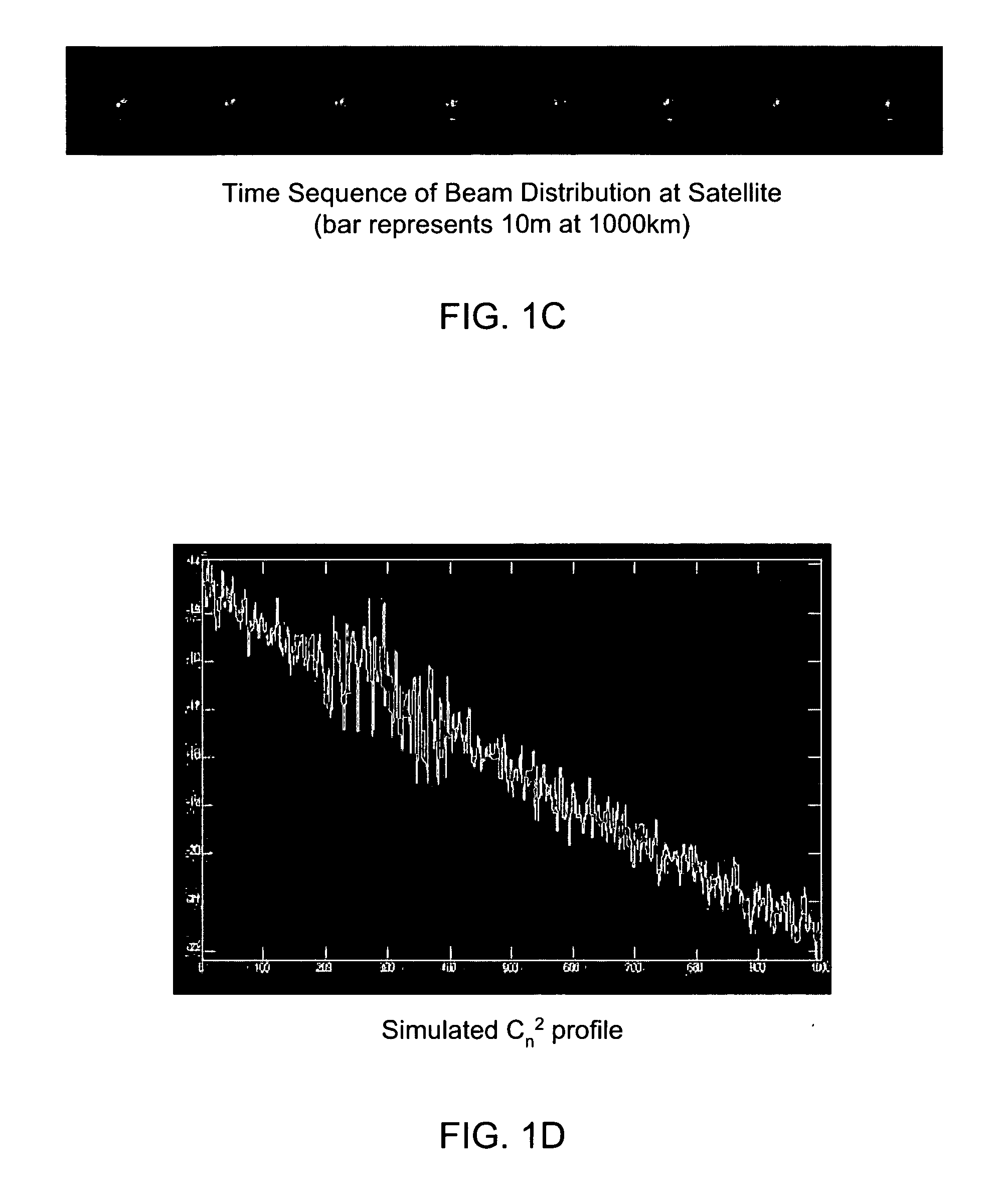In military applications, such laser communication systems and networks offer a level of superiority and security over radio-frequency (RF) based communication system which have relatively limited band-widths, and thus data transfer rates, as well as being susceptible to RF-based jamming techniques intended to interfere and disrupt the performance of such systems.
However, FSO laser communication systems are not without challenges and problems and challenges.
The density of the
atmosphere declines rapidly with altitude and thus most of the wavefront errors are generated close to the aircraft.
For the light propagating up to the aircraft the wavefront errors picked up close to the aircraft evolve along the long path to the
satellite so that the beam that reaches the
satellite has both phase and intensity errors.
Therefore, the airborne to space borne direction as being the most problematic direction in this link.
Such an event would lead to a deep fade of the link
signal for any
receiver aperture of less than a few meters
diameter.
Difficulties arise when this point-ahead angle becomes larger than the isoplanatic angle of the atmospheric turbulence.
If the point-ahead angle is larger than the isoplanatic angle, the wavefront error measured from a source co-located with the
satellite does not correctly represent the aberrations that will be experienced along the path of the transmitted beam.
Also, as wavefront tilt is the strongest atmospheric aberration, this aniosplanatic effect can lead to serious pointing errors in the transmitted laser beam if the employed laser
beam tracking algorithm uses only the satellite apparent position to estimate the error.
However, the laser beam profile on the right shows that significant fade events can occur as the
receiver aperture could easily lie within one of the dark (speckle) regions of the laser beam spot image.
Also, as turbulence is a random process, there will be occasions when higher order aberrations are strong enough to further disrupt the laser beam profile.
Unfortunately, under conditions like those of the Wave-Optic Propagation Simulations described above, the performance of phase only AO compensation systems is very limited.
Portions of the received beam with very low intensity lead to erroneous phase measurements and corrupt the calculated wavefront.
While techniques exist for doing this, none have been demonstrated in the field.
There are the same problems due to regions of low intensity in the receiver
pupil mentioned with regard to the transmit side of an AO compensation system.
However, if the phase is correctly measured and compensated, then the laser beam spot at the
detector should approach a
diffraction limited size.
This compensation system cannot do anything to reduce the size of variations in the power coming into the receiver.
On top of these basic
physical limitations of AO compensation systems for horizontal paths, there are also large and costly
engineering problems due to the high temporal frequency characteristics of atmospheric turbulence.
For many applications of wavefront sensing, the generation of this reference wavefront and its introduction into the
wavefront sensor present significant difficulties.
In this case, there is no simple way to introduce the proper reference wavefront that will produce the correct measurement.
While prior art laser communications systems provide good examples of this problem, the same problems are nevertheless present in all AO systems.
If the
fiber is slightly out of the correct focal plane, or if it is translated so that the
plane wave that focuses onto the fiber is at an angle to the
plane wave used to calibrate the sensor, then the
control system will drive the wavefront to be plane at the WFS, but not optimally couple into the fiber.
Further, if the
beam splitter between the WFS and the collection optic introduces different aberrations on the transmitted and reflected beams, then the control loop again will do the wrong thing by flattening the wavefront at the WFS.
Various several techniques also have been developed for addressing such “beam-
fiber coupling” problems, which arise when the receiver fiber is slightly out of the correct focal plane or if it is translated so that the
control system drives the wavefront to be planar at the WFS, but not optimally coupled into the fiber.
However, both of these compensation techniques have the same shortcoming: the magnitude of the misalignment between the tracking sensor and the receiver is not fixed; it can vary with temperature, gravity loading, vibration, etc.
Over the course of time, the alignment will degrade and the performance of the
receiver system will be compromised.
This requirement limits the maximum allowable wavefront gradient in each subaperture of the Hartmann sensor.
Furthermore, the gradient cannot be so large that the spot moves out of its subarray.
This often leads to a limitation in overall system performance.
However, the transition of the light from fiber to
free space presents problems.
Conversion of the light signals to electrical signals at very high rates places constraints on the physical size of the electro-optical sensor.
This means that the focal spot needs to be close to
diffraction limited to properly couple the light from
free space to the fiber.
Unfortunately, propagation of light through the
atmosphere introduces aberrations in the optical wavefront that prevent reaching the
diffraction limit.
However, under conditions of strong turbulence (such as encountered in a
free space link close to the ground), the disturbance of the
optical beam include both phase and intensity components.
Traditional phase only
adaptive optics cannot compensate for these intensity disturbances.
The result is that FSO links under these conditions experience deep signal fade events that lead to unacceptable interruptions in the communications link.
 Login to View More
Login to View More  Login to View More
Login to View More 


